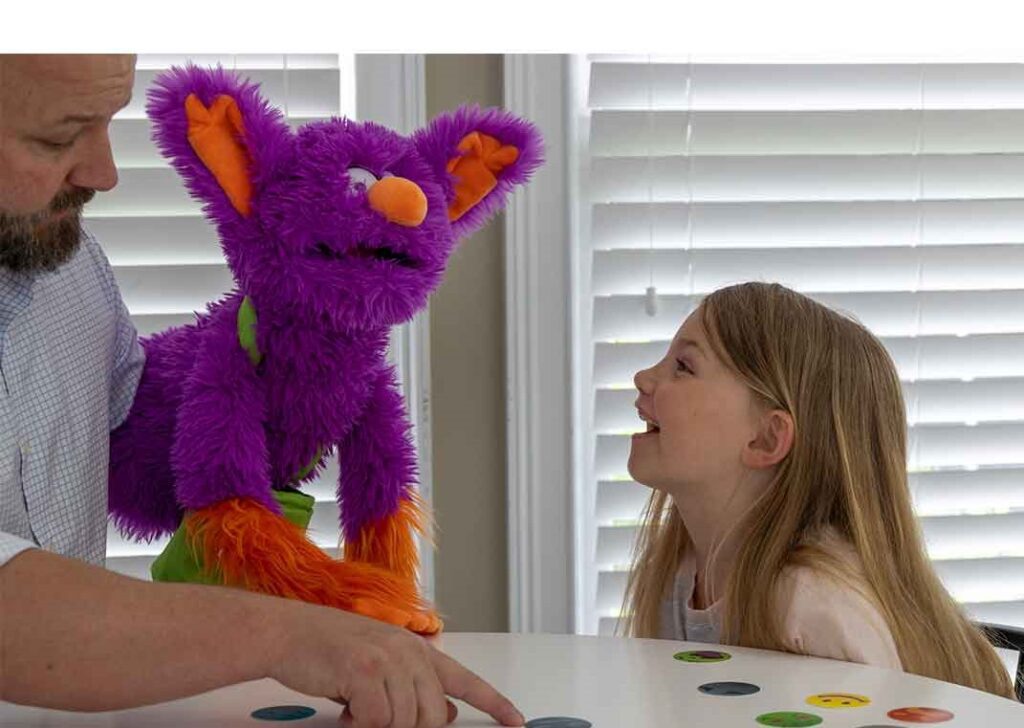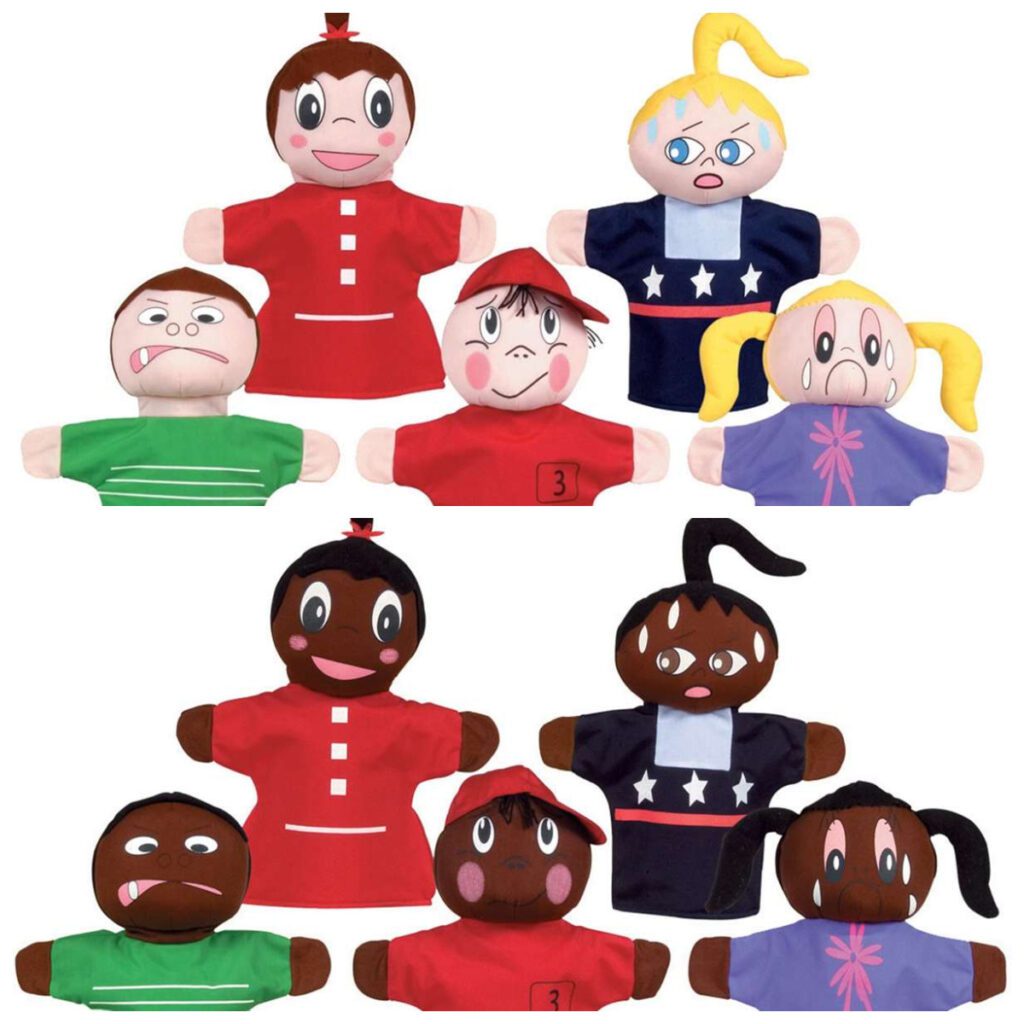Puppets as Therapeutic Toys

Our last article for Autism Acceptance Month focuses on the usefulness of puppet play for children with autism. Puppets have been used as entertainment since ancient Greece, though puppets have also been found in ancient Egypt, Australia, China, India, and across the Middle East. The art form is ubiquitous anywhere that humans have a history of storytelling – that is to say, everywhere.
Nowadays, puppetry is thought of as a children’s entertainment, with names like Jim Henson and the Muppets taking center stage. It’s true that puppets are effective tools for communicating with young audiences. Young children are concrete thinkers, so seeing a story helps them retain the details more than simply hearing it. However, more than just being fun, puppets are now recognized as important tools for communication development and social training.

In fact, puppets are now seen as great tools for working with children on the autism spectrum. A prominent 2021 study by the Yale Child Study Center found puppets hold the attention of autistic children better than another person does. Puppets are therefore promising tools for strengthening such children’s social development. While the use of puppets in therapy settings isn’t new, this research provides a jumping off point for parents and caretakers who may be interested in using puppets in their own interactions with their child.
History of Puppets as Therapeutic Tools
Counseling practices across America have used puppets since at least the 1920s and 30s. The collective nature of puppet shows facilitated group-centered treatment and encouraged socializing among psychiatric patients. Additionally, theater was an activity accessible to patients of all ability levels. Puppet theater in particular empowered patients with both wide and limited ranges of proficiency to participate.

Drama and puppetry are not as common in therapeutic settings now, but they are coming back in child psychology circles. Puppets can encourage children to share how they are feeling, either by telling the puppet (controlled by the counselor) or by using a puppet to express their emotions. Puppets can also be used to walk through scenarios with children and coach them on social behavior.
Why Puppet Therapy Works
Puppets are good tools for working with children, especially those on the autism spectrum, because puppets provide a focal point for communication without requiring the social adeptness that interacting with a real person does.

One reason for this is that puppets are concrete representations of human and non-human partners. As noted in previous posts, children with autism have difficulty engaging in symbolic play, or “make believe” games. But though puppets require a bit of roleplaying, they actually represent a less abstract scenario to the children who are interacting with them. A puppet of an elephant is, in fact, a sort of elephant to the child; a puppet of a superhero is, in fact, a superhero. And, unlike a static baby doll, a puppet is “alive”. Interacting with it makes sense. It is therefore easier for a child who does not normally understand “make believe” to engage with a puppet.
Puppets are also engaging because they are brightly colored, distinctly shaped, and textured, making them a sensory delight to children who crave sensory stimulation. Their faces have recognizable features but don’t display the hundreds of subtle changes that a person’s face does. So, a child who has difficulty translating human expression might feel more comfortable with a puppet, especially if the puppeteer verbally — and therefore clearly — expresses how the puppet feels.

Lastly, puppets can act as either mouthpieces or confidantes for children to express things they may not feel comfortable saying as themselves. For a child who does not have many peers, a puppet can become a companion.
How to Use Puppets with Your Child
While puppets have become commonplace in clinical settings, they can have a place in everyday arenas as well. Here are some suggestions for caretakers of children with autism who want to introduce puppets to their toybox:
- Let your child choose which puppet they would like to play with. They may have a strong preference for an aesthetic or a role. If they choose a puppet to act through, ask them about their puppet. You can also ask the puppet to tell you about itself. Let your child tell you a story through their description of the puppet’s personality and history.
- Remember that to your child, that puppet is not just a plaything but is an actual character. While playing, speak directly to the puppet as though it were real.
- On the other hand, you may be the one speaking through the puppet. You can present the puppet in a few different ways. One option is to make the puppet a trustworthy authority and speak through them to your child. You can also say the puppet needs help and let your child think through solutions with the puppet. This is a stronger option because it encourages the child to be an active participant in the outcome.
- Remember, while you’re speaking as the puppet, they are their own character – you may think you’re roleplaying, but to your child there are three participants in the conversation.
- If your child is nonverbal, you can still use a puppet to initiate communication. Puppets can ask yes/no questions or give simple instructions. Some puppets have built-in cues, such as accessories that show different emotions, that a child can use or point to in response to the puppet’s prompts.
At all times, let puppet play be led by your child. Puppets are tools to let children explore and express themselves. For those who have difficulty expressing themselves otherwise, playing with puppets can provide a valuable outlet.
